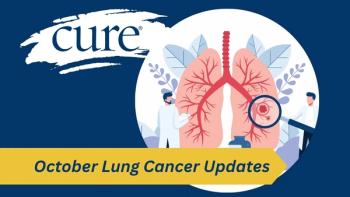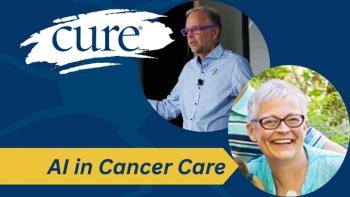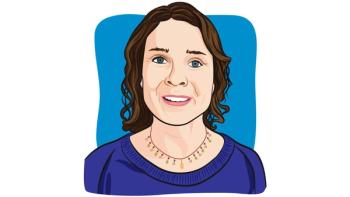
7 Years Going on 8 – Life After Pancreatic Cancer
A survivor of pancreatic cancer looks back on the day he received his diagnosis, and shares advice for others in the same shoes.
Back in 2013, my life seemed to be on track for once. I had a great job managing large projects, something I loved. My three daughters were off on their own and doing well. We had been able to set aside a little bit for the proverbial “rainy day.” Little did we know the clouds were about to burst.
It had been a grueling week. Getting a new project off the ground always is. A buddy from work and I had run out for a Friday lunch. We both had the special – chicken enchiladas in red sauce, with rice and beans. Over the weekend I felt off. I thought it was nothing more than an upset stomach. The next week I quizzed him if he had any issues with the food. He shot back, “No. Best Mexican food ever!”
The restaurant was a place I ate at often, and I had never had any issues with their food. Always hot. Plenty spicy. Just plain tasty. I knew something was amiss.
Concerned, I made an appointment to see my doctor of two decades – I’ll call him Dr. Ralph Stevens. Besides being our family doctor, over the years he and I struck up a bit of a friendship. Our daughters played volleyball together in a city league, so on occasion, I saw him at a game. Not thinking much of my queasy stomach, he ordered as he called them “routine tests” (I often wonder if our doctors use words like these to shelter us from knowing something far from “routine” might be going on).
The following weekend, things fell apart. Turmoil roiled my stomach. Feeling pukey, nothing sounded good. Nothing. Not knowing what else to do I called Ralph Sunday afternoon. He was blunt, telling me, “Either go to the ER or come in first thing on Monday.”
After Googling reasons to go to the ER, and not finding “feeling pukey” as one of the reasons, I waited to see him.
On arriving at his office on Monday, I found his waiting room packed with people who had had the foresight to make an appointment. I told his receptionist, “Dr. Stevens told me to come in.” She rolled her eyes and said, “Take a seat over there. We’ll get to you when we can.”
With waves of nausea rolling over me, I closed my eyes and hoped to be called soon. After some time, his nurse, Alice, took me back to an exam room where I continued to wait.
As she pulled the door closed behind her, she said as all good nurses say, “The doctor will be right in.”
A few minutes later, hearing a tap on the door, I opened my eyes as Ralph stepped in. Trying to look better than I felt, I forced a weak smile.
“Have you seen my test results?” I asked.
Scanning me up and down much like someone looks at a cheap T-shirt on a rack at Walmart, he said, “Dude! You’ve got other problems. You’re yellow.”
Two hours later, I had an emergency CT scan which showed my bile duct was blocked. A trip to the ER followed, where after nine hours I was admitted. All too soon I learned I had pancreatic cancer.
With few people with this diagnosis seeing two years and most not seeing five, I am amazed to be approaching eight. Thus, it’s not lost on me that I’m living on borrowed time. One only needs to scan the recent news to see this. With her pancreatic cancer found early, Supreme Court Justice Ruth Bader Ginsburg saw 11 years, whereas with his found too late, Alex Trebek of “Jeopardy” didn’t see two.
So what have I learned in all this?
There is life after hitting the wall.
On learning I had pancreatic cancer and not being able to get much out of my tight-lipped surgeon who extracted my tumor as to what my survival chances were, I did what most would do. I put my affairs in order, updated my will and followed my doctor’s orders word for word. I asked a lot of questions but got only a handful of jumbled answers. Wondering if I would make it, life seemed to move in slow motion. After getting through my first and second then my 12th and 13th oncology follow-ups with clean labs and scans it dawned on me I might make it after all. There is life after hitting the wall (although it takes time to see it).
Accept what is.
Part of the process for me has been accepting what is rather than wishing things were different. Once I accepted that I might very well die, I began to live again. Fear of death stops many of us from living. Accept what is (and start living again).
Restack your priorities.
Some people work to live whereas others like me live to work. Although I wasn’t your classic workaholic who brought home stacks of work every night, I was on the edge. I took my job seriously, perhaps too much so. Like so many, I found meaning in my work. Facing the cruel reality that I might not make it forced me to realign my life and get my priorities straight. What mattered most to me? Someone once said, “If you look at a person’s calendar you can tell what matters most to them.” Looking at my calendar, it was all too apparent work was my priority. Restack your priorities (or cancer will do it for you).
Hold your family close.
Getting through the gauntlet of treatments, a grueling surgery followed by weeks in the hospital with complication after complication, six weeks of radiation and months of chemo changed me for the better. Although I’m not there yet, I work hard to be more patient and understanding. I am now more inclined to offer mercy rather than judgment. Hold your family close (because this is all any of us have).
Whether you are one year going on two, or in my case, seven years going on eight, know there is life after hitting the wall, accept what is, restack your priorities and hold your family close.
For more news on cancer updates, research and education, don’t forget to





